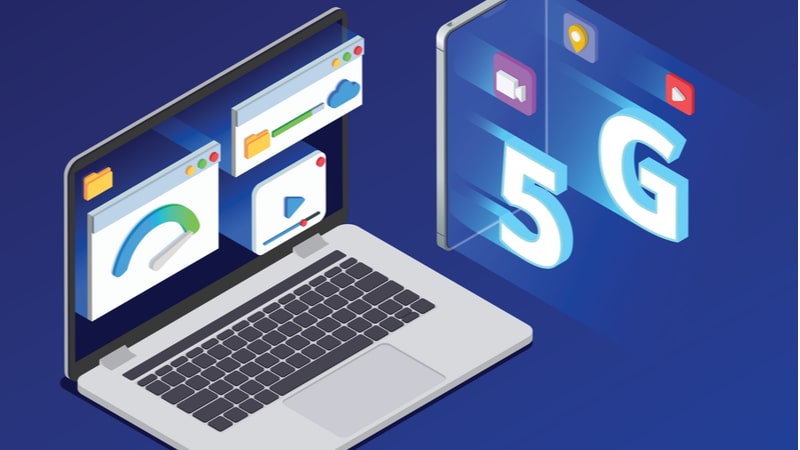Unlocking the Benefits of 5G and Beyond

By Michael Zurat, Senior Solutions Architect, General Dynamics Information Technology (GDIT)
5G technology has the potential to be transformative for businesses and consumers, as well as for the U.S. government. 5G can provide the enabling connectivity to drive digital transformation from a paperless digital Internal Revenue Service, to enabling the Postal Service to outperform Amazon, to providing zero latency situational awareness to our first responders and warfighters at the point of need.
The Department of Defense (DoD) understands that leveraging both purpose-built private 5G (P5G) and operating over commercial wireless networks managed by mobile network operators (MNOs) in support of their mission is critical to keep pace and provide our warfighters with technical superiority on the battlefield. This is evidenced by recent new projects as part of its Innovate Beyond 5G program and recent DARPA programs.
These include: a new industry-university partnership to jumpstart 6G systems; research on open radio access networks (ORAN); security and scalability for spectrum sharing and; efforts to increase resiliency and throughput for wireless tactical communications for the warfighter, and DARPA’s efforts to research securely operating over MNO networks globally.
As 5G technology becomes more widely available and as we look ahead to what’s next, it’s important for agencies of all types to consider both the risks and opportunities associated with 5G and other new wireless networking technologies – and the drastic changes the technology introduces at all levels of wireless architecture from network core, to edge compute, to radio, and RF spectrum.
First, the Risk
Spectrum is a finite resource. Like land, they’re not making more of it, and new players emerging in the space have only increased demand for it. The recent announcement that the Federal Communications Commission intends to continue to release spectrum capacity for commercial uses will put the DoD and its early-stage experimentation at the mercy of commercial mobile network operators unless the department invests heavily in next-generation wireless technology. In the meantime, it will be important for the government to adequately manage spectrum capacity for critical civilian and defense needs and work closely with industry and radio manufactures to ensure all devices meet the same standards for interference or RF filtering and shielding.
Another inherent risk: Playing catch up. Many other countries – including some near peers – are farther ahead than we are when it comes to implementing commercial 5G. The window of opportunity for the U.S. defense industrial and commercial base to catch up, or to leapfrog those nations’ advancements, is rapidly closing.
Now, the Opportunities
5G is being used today across a variety of industries and agencies. You’ve no doubt seen cell phone companies’ commercials touting the benefits of 5G and making claims about what it can offer. And a few in some sectors, agencies, and companies are rolling out their own private 5G networks. These networks, however, are only the tip of the 5G “iceberg.” 5G networks available commercially today in the U.S. are non-standalone networks – basically 4.5G – leveraging new radio spectrum but at the core leveraging legacy LTE equipment. Once fully 5G stand-alone compliant services are available we will see the full potential of the 5G feature set.
In the Federal space, 5G is being used to support experiments at the DoD as well as initial P5G production pilots at air, sea, and land bases across the U.S. The Department of Veteran Affairs has leveraged MNO-provided 5G to support virtual reality (VR) and augmented reality (AR) surgery training at the Palo Alto Medical Center. The Federal Bureau of Prisons has deployed private wireless at correctional facilities across the country to provide inmates with video and audio chat with those outside, as well as on-demand network and training access.
At GDIT, we see 5G as an enabler for digital transformation and industry 4.0 – for everyone from warfighters in theater, to first responders to scientists in remote locations using edge devices to engineers collaborating on digital twin simulations. In our 5G Emerge Lab, we test and demonstrate 5G technologies alongside our customers. The lab is a place to convene and train skilled talent, assess emerging 5G solutions, and work with partners to innovate and rapidly develop new ones. It allows us to prototype and prove capabilities in response to customer requirements, to test and compare vendor technology, and to interact with the latest 5G technologies and then use that knowledge in support of all our customers.
We look forward to continuing to conduct our research and develop 5G innovations in partnership with our customers so that we can help accelerate progress on 5G and next generation wireless across the Federal government, enabling agencies to look ahead to what’s next and to expand their capacity to deliver on their missions.
